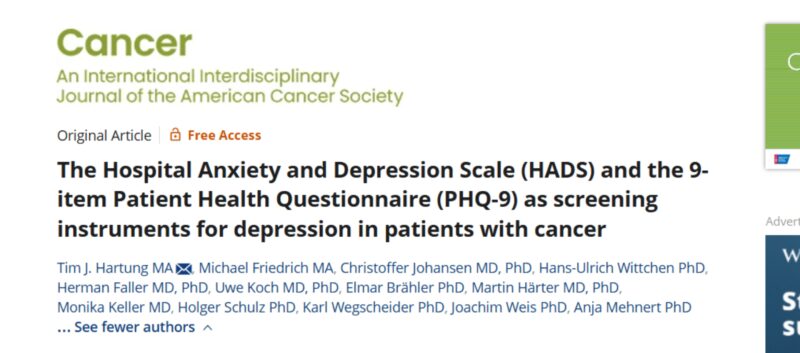John Librett, Chief Scientific Officer at Survivor Healthcare, Cancer Survivor, shared a post on LinkedIn:
“During my recent cancer diagnosis, I asked my cancer:
“What are you here to teach me?”
One lesson my cancer taught me is the potential risk of diagnostic error, that may effect millions of cancer survivors.
In 1974, Craig and Abeloff observed:
“Interpretations of the results of the somatization subset is particularly difficult because many of the items could quite easily be positive as a result of the cancer itself. Thus, elevation of this dimension might well be merely an index of the physical illness rather than evidence of purely psychological distress.”
Fast forward to today: DSM-5 depressive criteria include symptoms such as appetite or weight loss, sleep disturbance, fatigue, low energy, and difficulty concentrating. As Craig and Abeloff observed, these are also common somatic experiences of cancer and its treatments.
Hartung and colleagues address this differential diagnosis challenge:
“The screening algorithm recommended by ASCO had only 44% sensitivity, suggesting that this algorithm may not be suitable for detecting a satisfactory proportion of depressed patients.”
Patient reported outcome (PRO) measures may support differential diagnosis at the flat of the cost(resource)/benefit curve.
On on.”
Title: The Hospital Anxiety and Depression Scale (HADS) and the 9-item Patient Health Questionnaire (PHQ-9) as screening instruments for depression in patients with cancer
Authors: Tim Hartung, Michael Friedrich, Christoffer Johansen, Hans-Ulrich Wittchen, Herman Faller, Uwe Koch, Elmar Brähler, Martin Härter, Monika Keller, Holger Schulz, Karl Wegscheider, Joachim Weis, Anja Mehnert
Read the Full Article.

Bogda Koczwara, Director of Australian Research Centre for Cancer Survivorship, shared a post by John Librett, adding:
“PROMs are tools with their inherent sensitivity and specificity that may vary according to the context and population served. This paper and post illustrates why that matters.”
